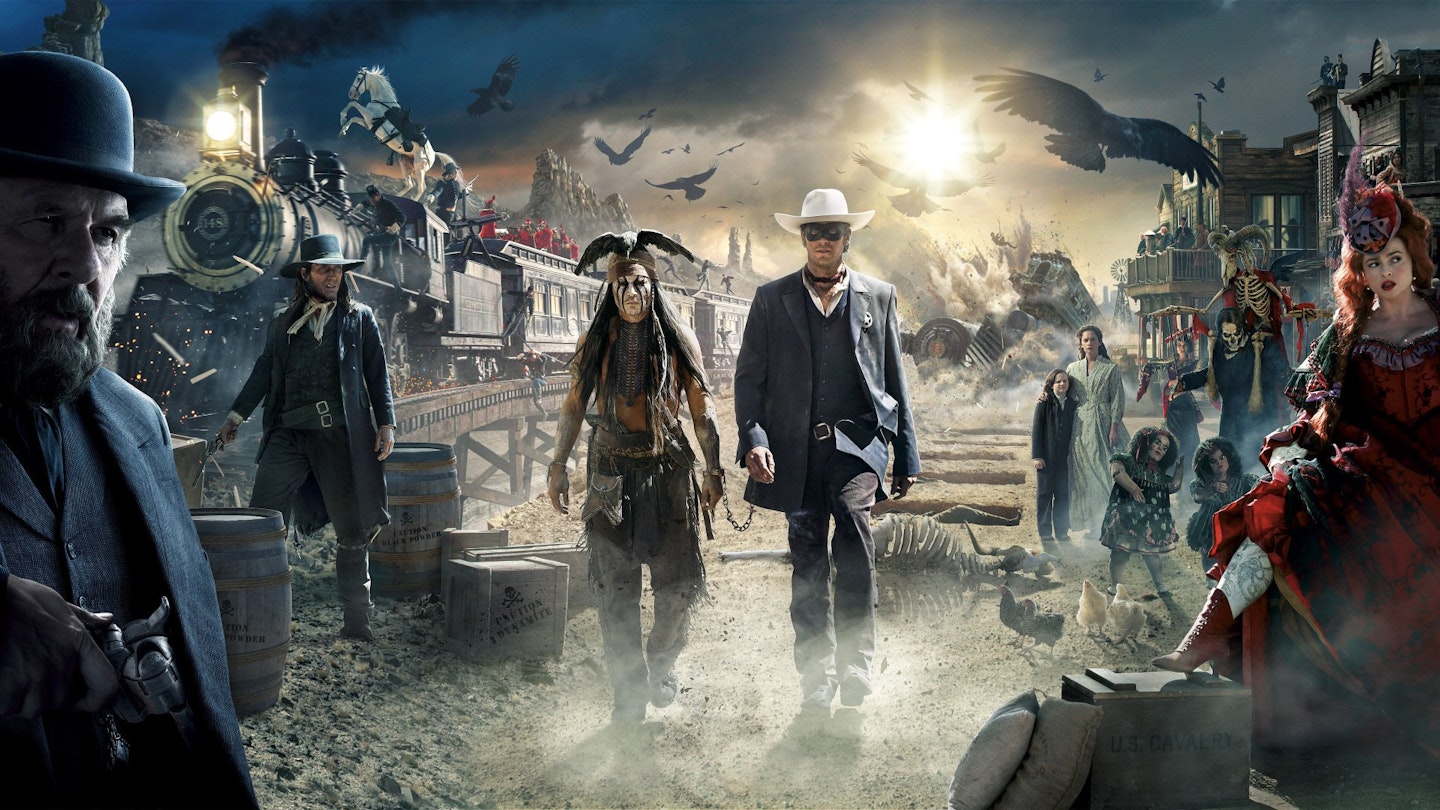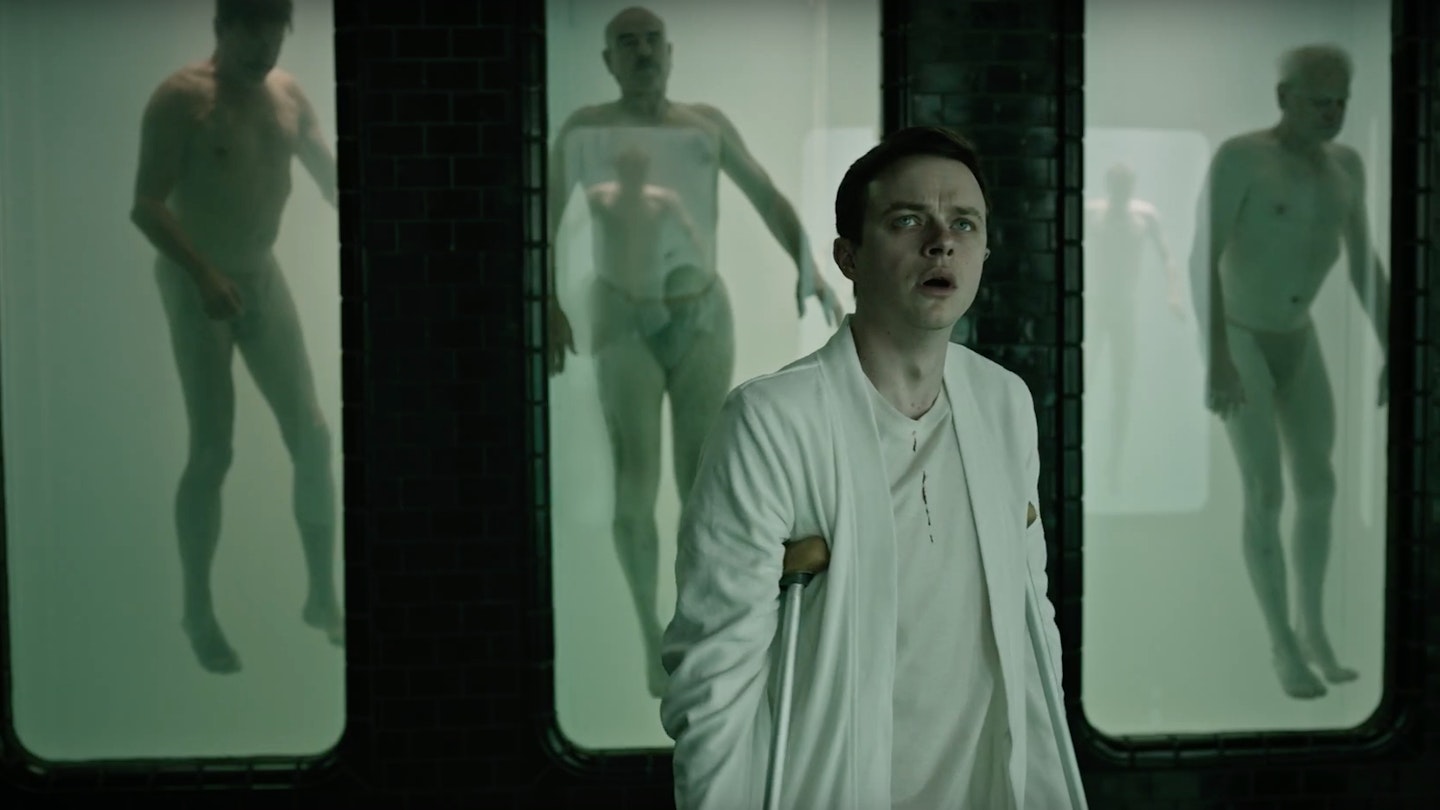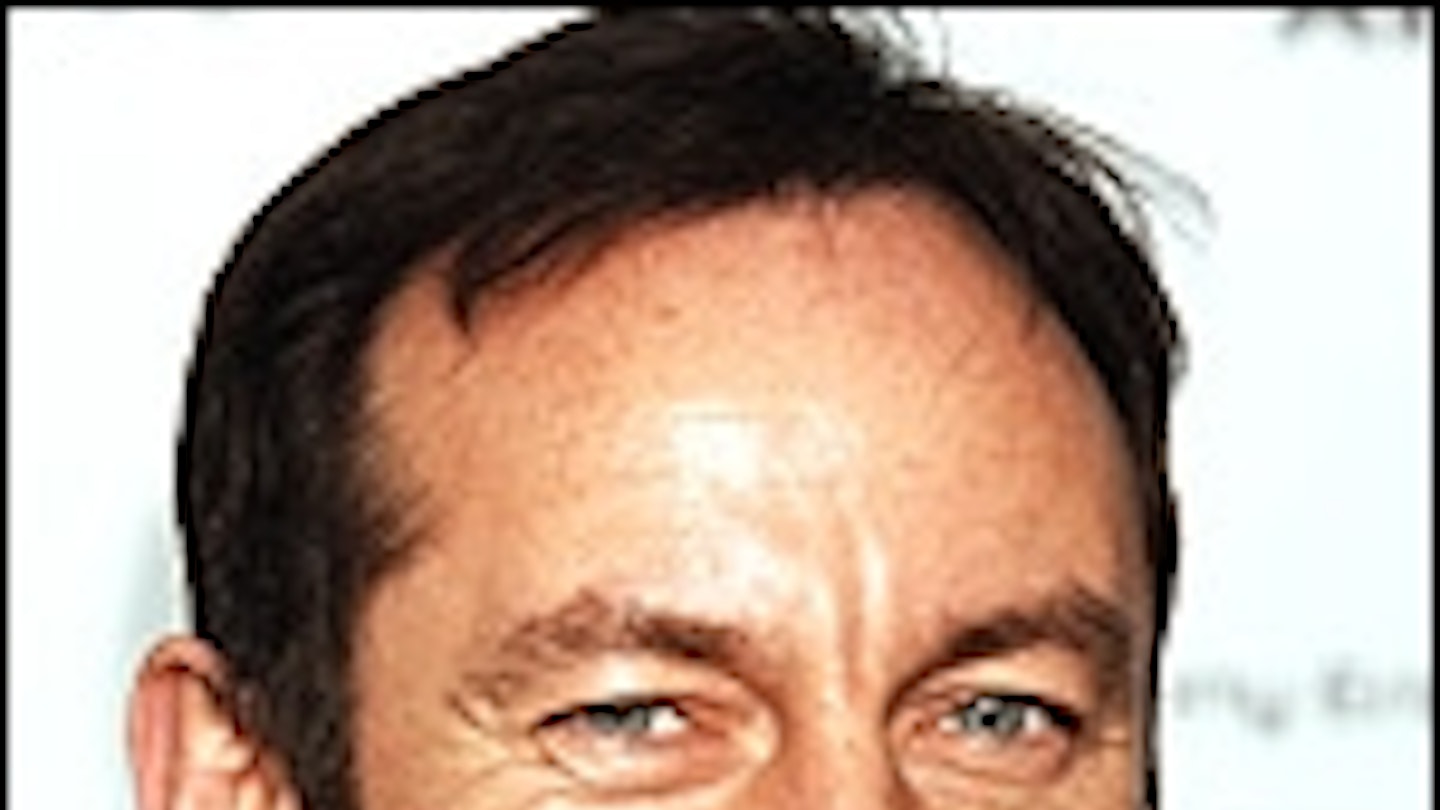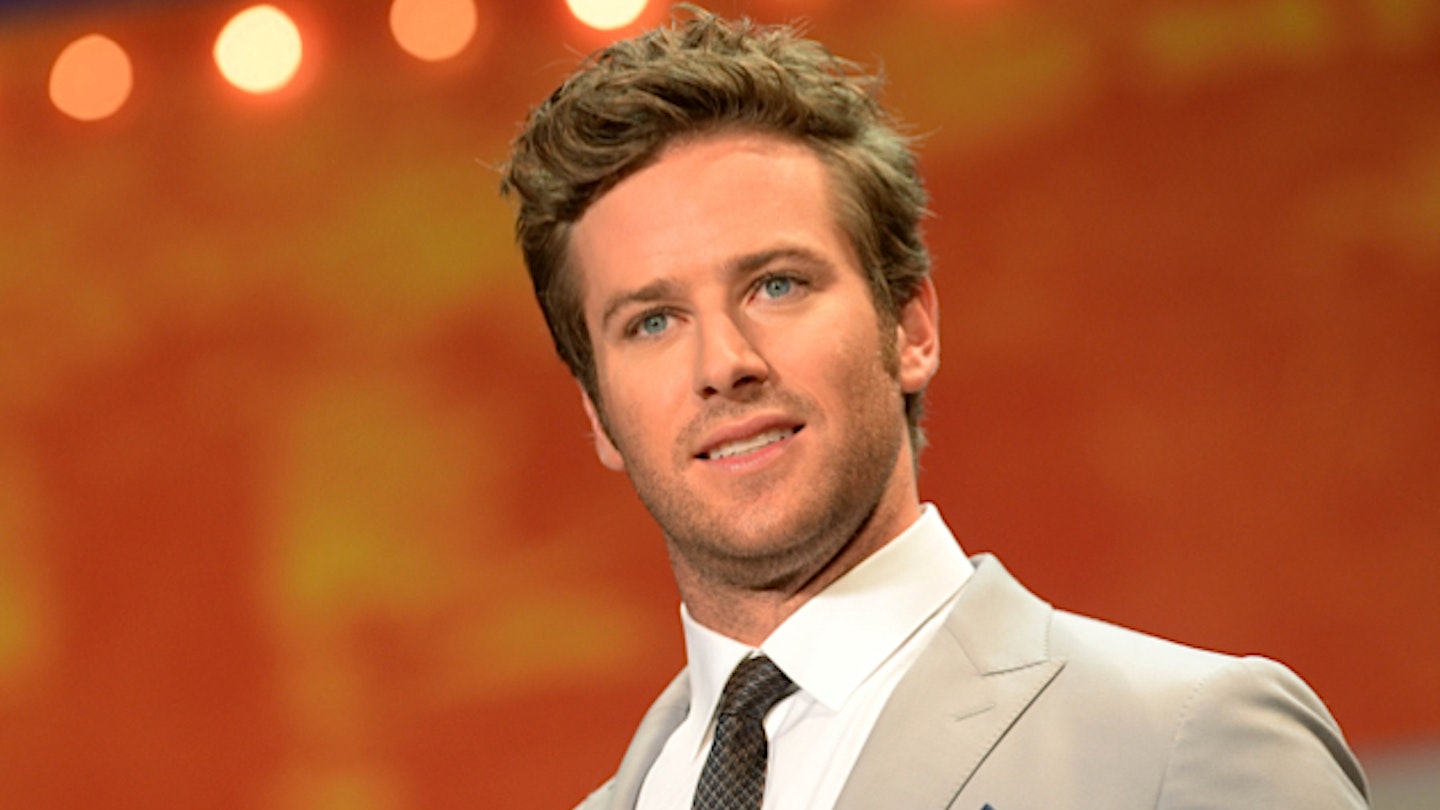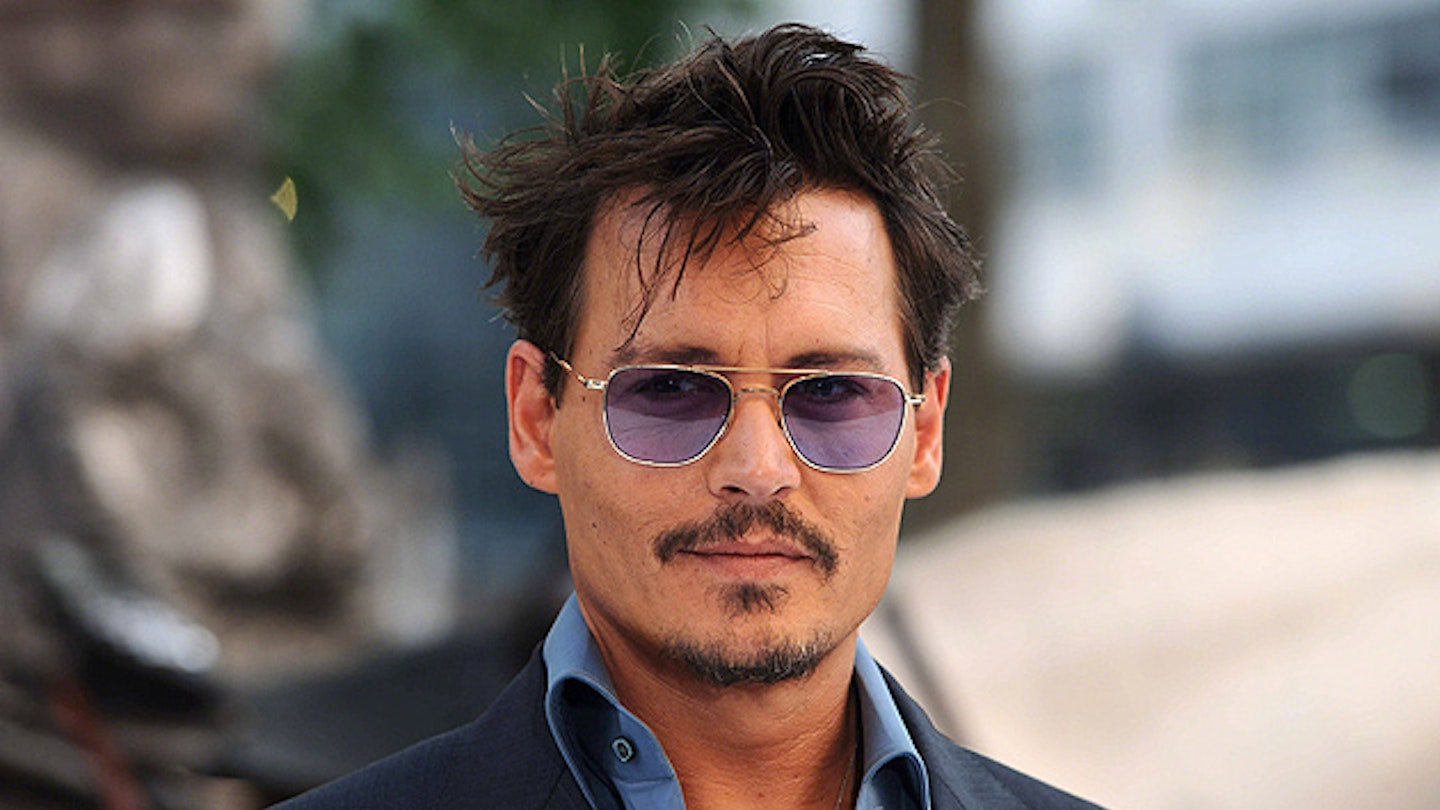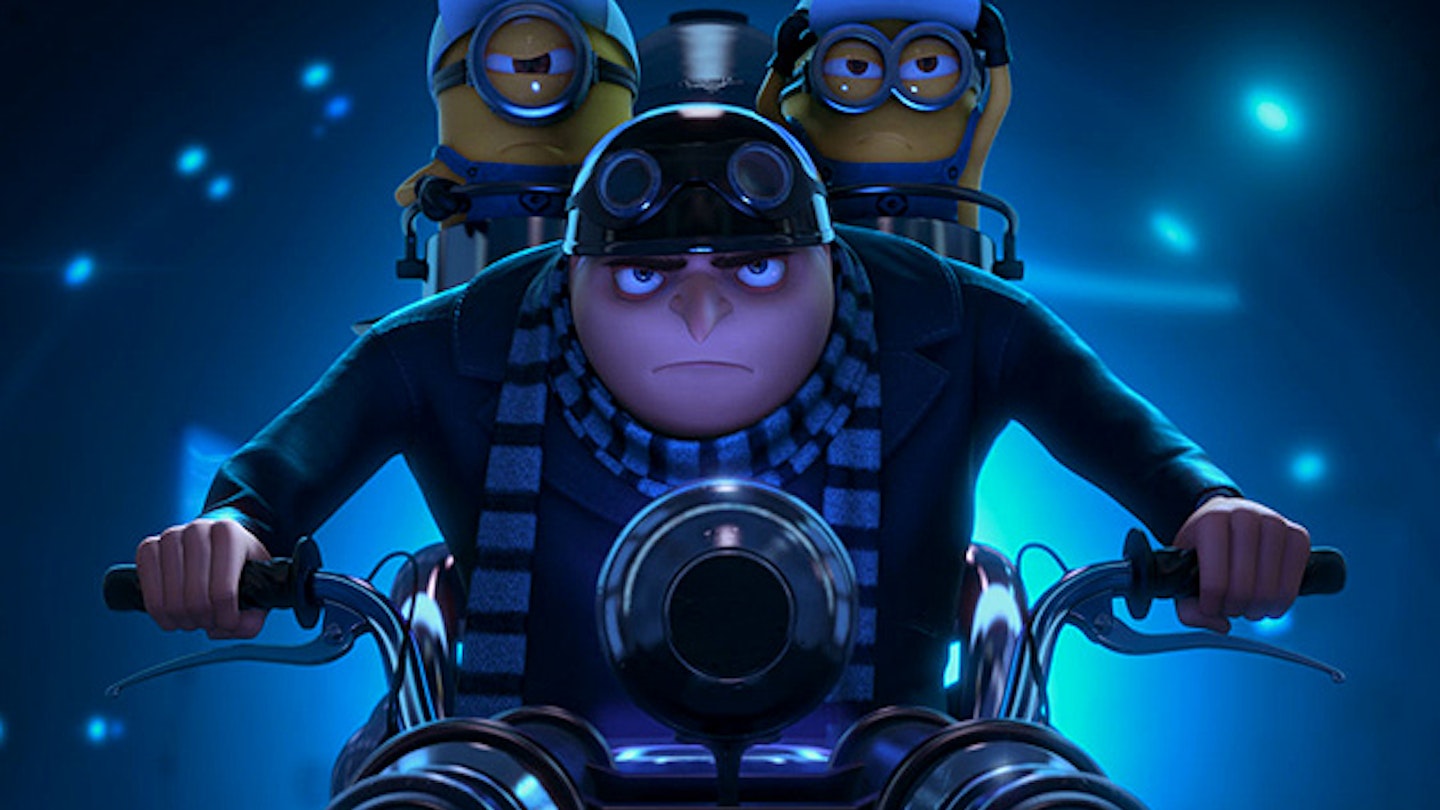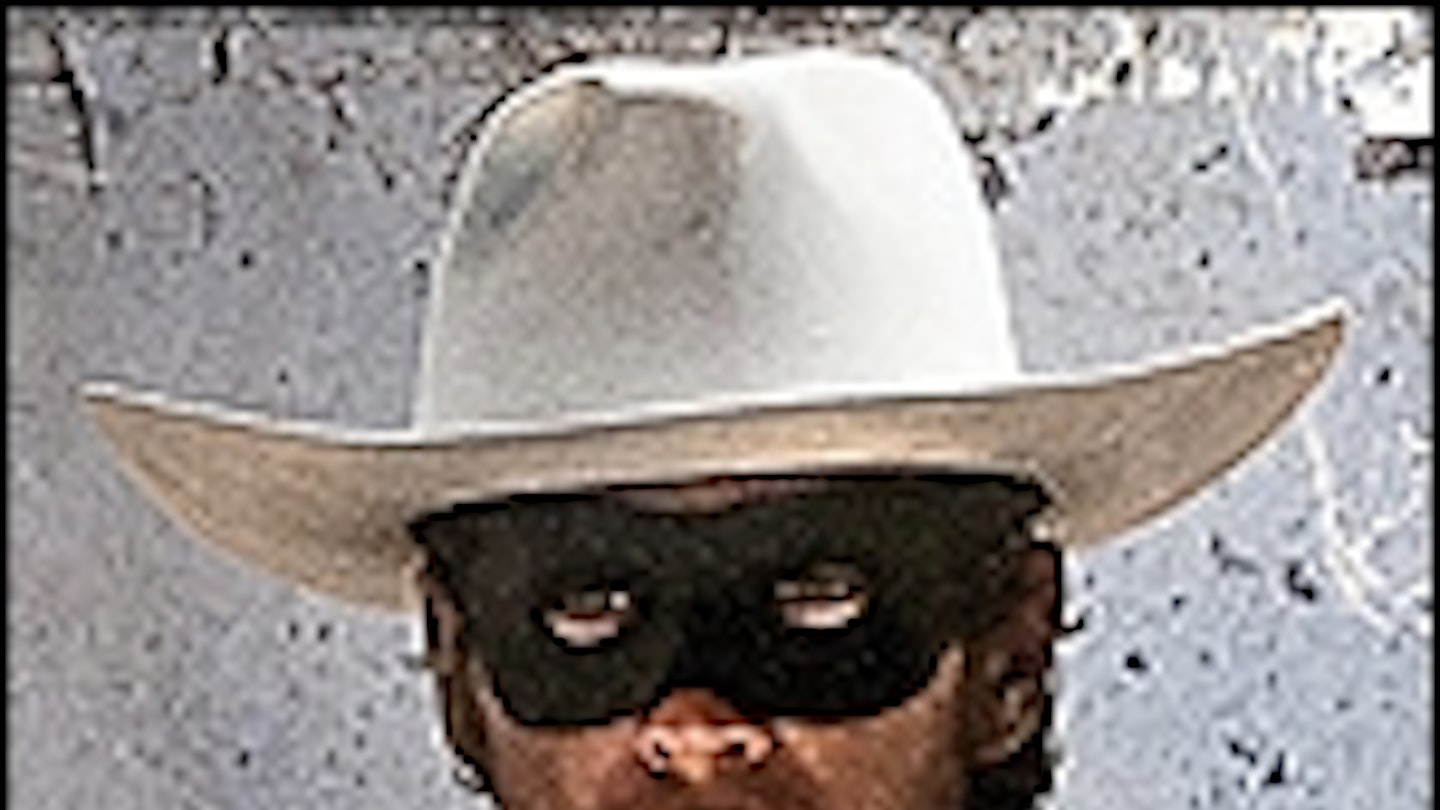Hi-yo and away, indeed! The Lone Ranger rides again, and it is with no small relief and a wide grin that we can embrace the reboot of one of the longest-running, most iconic franchises in entertainment history. The signs were not auspicious, frankly. Admittedly the photos of Johnny Depp in buckskin with a dead bird on his head — Depp’s make-up and costume inspired by the painting I Am Crow by Kirby Sattler, who is not American Indian and paints imaginary characters — looked tasty. But the years in development, multiple credited screenwriters, different mooted directors, vague chat of ‘production problems’, a budget that ballooned to the $250 million neighbourhood and a slew of comparisons to Wild Wild West from the US reviews all suggested a disappointing fiasco could be on the cards. Not a bit. Blockbuster über-producer Jerry Bruckheimer, director Gore Verbinski and writers Justin Haythe (from Revolutionary Road to this, who would have thought?), Pirates alumni Ted Elliott and Terry Rossio, with the considerable efforts of a stonking cast, stunt co-ordinators, animal wranglers et al, immortal music and the scenery enshrined as John Ford Country resoundingly deliver the rootin’, tootin’ goods and the potential for an ongoing saga to rival Pirates Of The Caribbean.
The scene is set when a small boy in a Lone Ranger costume visits a Wild West exhibit in San Francisco in 1933. That is just the first in an encyclopedia’s worth of homages and references, since 1933 was the year The Lone Ranger was created for American radio (running to nearly 3,000 episodes in over 20 years of broadcasts), spawning movie serials, novels, comics, cartoons, toys, a ’90s video game, a ’00s TV movie and, of course, the first TV Western, starring Clayton Moore and Jay Silverheels, which is still showing on retro channels in the US after 64 years.
Said child (Mason Elston Cook) is transfixed by a display featuring a wax figure of a weird and wizened American Indian, so old he looks like Keith Richards. Then he moves. It’s not a dummy, it’s an ancient, addlepated Tonto, who mistakes the boy for his *kemosabe *and takes off flashbacking at a gallop down Memory Lane. The device of an oldster telling a tale to a boy was genius in William Goldman’s The Princess Bride and it works as nicely here, the youngster’s intermittent objections, indignation and incredulity over aspects of Tonto’s story taking us back and forth in time periods and effectively linking episodic adventure into one big story in five acts. It also preempts protests in the stalls from Lone Ranger buffs concerned by deviations from the long-established lore. If one can sit tight and exercise patience through troubling episodes and seeming transgressions — like the ever-morally upright hero holding up a bank, noooo! — all is gradually revealed and explained in highly satisfactory, reasoned and sufficiently reverent fashion.
This is an origin story. John Reid (Armie Hammer) arrives in Colby, Texas, in 1869 with a law degree, a prosecutorial job and a belief in law, order and justice that remains unshakable to the point of nincompoopish, Dudley Do-Right innocence. His elder brother, Dan (James Badge Dale), is a Texas Ranger, and married to John’s one-time sweetheart, Rebecca (Ruth Wilson). When Dan and his posse ride out in pursuit of the infamous Butch Cavendish, John the city-slicker dude is embarrassed into coming along. Ambush and slaughter ensue. John finds himself regaining consciousness in a grave dug by eccentric (putting it mildly) Tonto (Depp), recovers and dons a mask made from his brother’s vest, the startlingly savvy-in-flashes Tonto advising him that he needs to stay dead in their circumstances. A partnership is born, with odd-couple bickering the tone and parallel agendas the plot, with the rest of The Lone Ranger’s essential accoutrements — flashing white wild stallion, silver bullets, catchphrase et cetera — collected in due course.
Meanwhile, vicious baddies (William Fichtner, almost unrecognisably grubby as badass Butch, accompanied by assorted sleazoids including the bizarrely underused likes of James Frain) are raiding ranches and so forth, stirring up war between the Comanches, settlers and railroad interests (embodied by Tom Wilkinson’s devious big shot presiding in the fancy, elegantly appointed railroad car). We should point out that history and geography have gone out of the window from the off, and other niggles include various musical anachronisms — like a band playing a Sousa march that wasn’t composed for another 20 years. The Transcontinental Railroad that linked East and West, and the thousands of Chinese workers who laboured to build it, went nowhere near Texas. And locations in cinematically sacrosanct Monument Valley, Utah and California look nothing like Texan terrain. But they do make for mighty pretty pictures; a shot of The Lone Ranger and Tonto astride their mounts at cliff’s edge on John Ford’s Point in Monument Valley is one of the breathtaking images that make you take this film seriously and to heart amid crazed action, breakneck escapades and belly laughs. It isn’t just golden oldies that rate referencing. Helena Bonham Carter’s Red, roistering madam of the improbably Fellini-esque local pleasure palace/den of iniquity, has a finely crafted artificial limb of ivory scrimshaw that conceals a secret straight out of Tarantino and Rodriguez’s Grindhouse.
Depp and Hammer pitch their performances as Tonto (first time ever the ‘sidekick’ has top billing) and Lone Ranger beautifully, funny but not too ridiculous, engaging, even moving. Tonto’s broken English and wackier rants are *his *mask; there is intelligence, wisdom, cunning and long-term planning in his seeming madness. Even his inauthentic, highly individual accessories are eventually explained as possessions and emblems with great significance in some major backstory reveals. (Small moments, pointed shots and apparent throwaway lines are neatly planted throughout that make sense of several mysteries and oddities by the end.) The impossibly handsome Hammer also has the chops to pull off a naive, do-goody pratfaller, a classic hero and a sorrowing survivor with dramatically emotional gear changes. Although this is dangerously pitched as an action-adventure-comedy-Western, the abundant humour happily stays the right side of feelgood, knowing jests never straying into panto, parody or piss-take.
Silver *is *a comedy horse, with a taste for hooch recalling Lee Marvin’s drunken nag in Cat Ballou and an aptitude for heights that defies explanation, so there is none, but when thundering hooves and riding like the wind are called for he’s the business. You can even see where the money went when, at last, what we’ve waited for and what must happen happens. The Lone Ranger appears, heroically posed on Silver, on a rooftop, and Rossini’s William Tell Overture takes over from Hans Zimmer’s superb score for a gobsmacking set-piece of runaway trains on twin tracks, Tonto aboard one, baddies on t’other, hostages and loot changing hands, heroine dangling over precipices, while the masked man and his steed fly over rooftops, railway carriages and chasms, the careening locomotives’ paths perilously aligning, bending, diverging and colliding in a sensational climactic spectacle. Thank goodness this is not in 3D or it would make you puke. Verbinski and co have literally timed and orchestrated the culminating thrill-ride action to the music, and it’s magical.
